How to Save Tomato Seeds – Easy to Follow Guide
This post may contain affiliate links. Read my full disclosure here.
If you’d like to save money and grow your own locally adapted tomatoes, we’ll show you how to save tomato seeds for reliable germination.
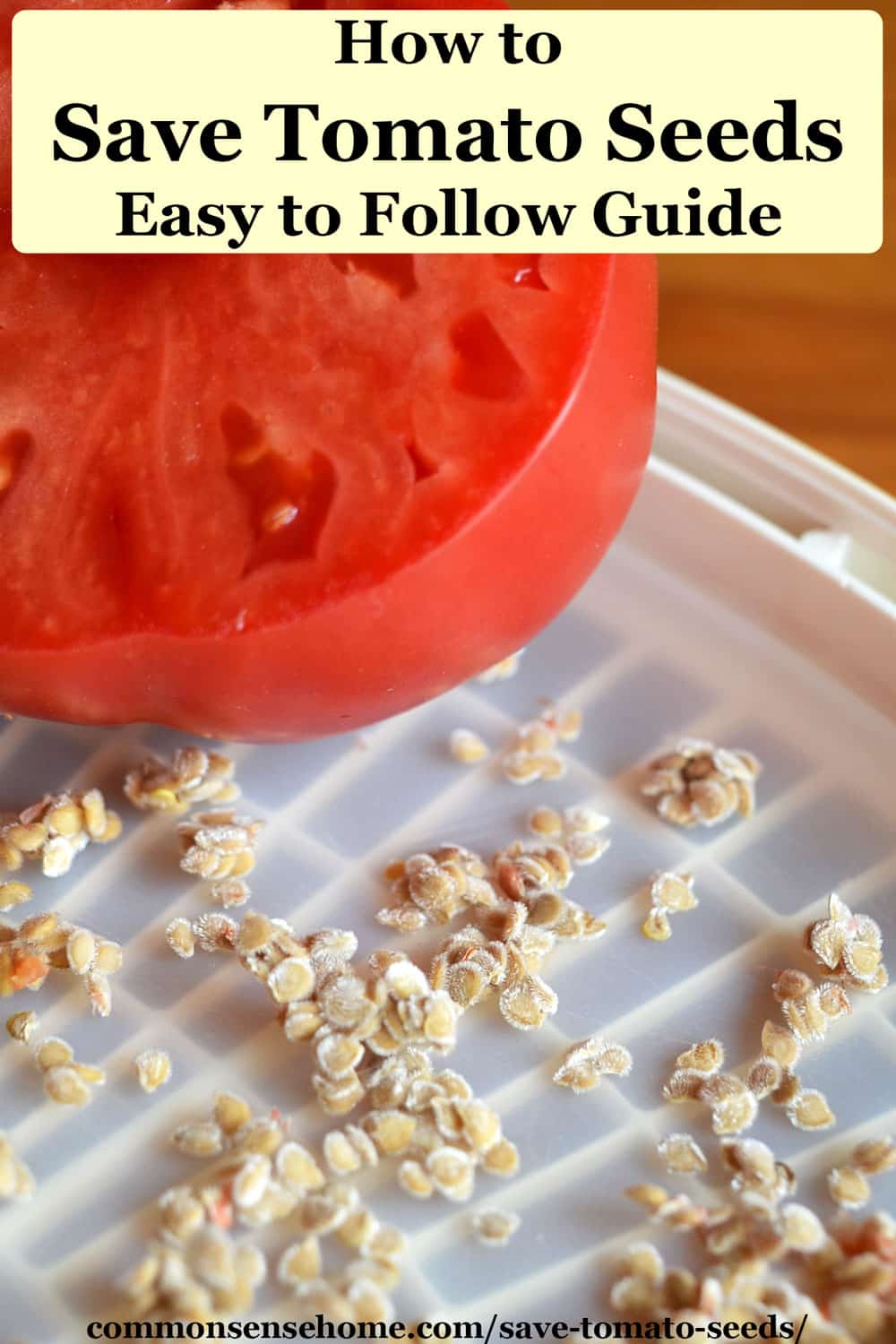
One note before we get started.
If you want tomatoes that grow true to type, you need to save seeds from heirloom tomatoes or open pollinated tomatoes. Hybrid tomato varieties may revert to one of the parent plants.
See “Types of Tomatoes (Best Uses, Flavors, and Plant Sizes)” for more information on tomato varieties.
To prevent cross pollination, avoid growing tomatoes from different varieties near each other. Ideally, you should keep different varieties at least 25 feet apart. We save seed from a single variety grown inside the greenhouse.
If space is tight, varieties may be separated by only 10 feet. When using a smaller separation, plant a tall barrier crop such as pole beans between the tomato plantings.
See “Isolation Distance Requirements for Tomatoes” for more detailed information on planting distances.
How to Save Tomato Seeds
Use these steps to save your tomato seeds for planting.
- Select ripe fruits.
- Gather the seeds.
- Ferment the seeds.
- Clean and dry the seeds.
- Store the seeds in an airtight container in a cool, dry location.

Select Ripe, Undamaged Fruit
When you’re picking fruit for seed, look for fully ripe tomatoes that are in good condition. Avoid bug holes or large cracks, since these can let unwanted bacteria inside the tomato.
Skip double fruits or malformed fruits. You want the best examples of your crop.
Gather the Tomato Seeds
To access the seed chambers of the tomato, cut across the fruit. Hold the tomato halves over a bowl and give them a good squeeze to collect the tomato gel. Use a spoon to help, if needed.
It’s a good idea to gather seeds from several fruits from different plants to have a wider gene pool, if possible.
We collected the tomato seeds from one of our batches of homemade salsa that was made with only greenhouse tomatoes. Since the seeds were removed before the salsa was heated, there should be no issues with germination.
Ferment the Seeds
If you take a look at fresh tomato seeds, you can see that each seed is coated in a gelatinous sac. This gel contains germination inhibitors, which we remove through fermentation.
The fermentation process is easy. Simply place your saved tomato seed goo in a glass jar or other non-reactive container with enough water to cover the seeds.
Cover the opening of your container with a coffee filter or cloth secured by a rubber band to keep the fruit flies out.
Place the jar in a warm location out of direct sunlight, and allow the tomato seeds to ferment for a few days.
It’s best not to ferment more than three days, because longer fermentation reduces the germination rate. Seeds that ferment too long may also start to sprout while fermenting.
Clean and Dry the Tomato Seeds
Once fermentation is complete, scrape off and discard any mold on the top of your tomato seeds. Place the seeds in a mesh colander and rinse under running water to wash off the excess tomato bits.
Would you like to save this?
Spread the rinsed seeds onto a paper plate or other drying surface. I like to use the fruit leather trays from my dehydrator. I don’t use the dehydrator itself, only the tray.
Air dry the seeds for about a week, stirring occasionally to prevent clumping. If the seeds stick together, gently break the clusters apart with your fingertips.
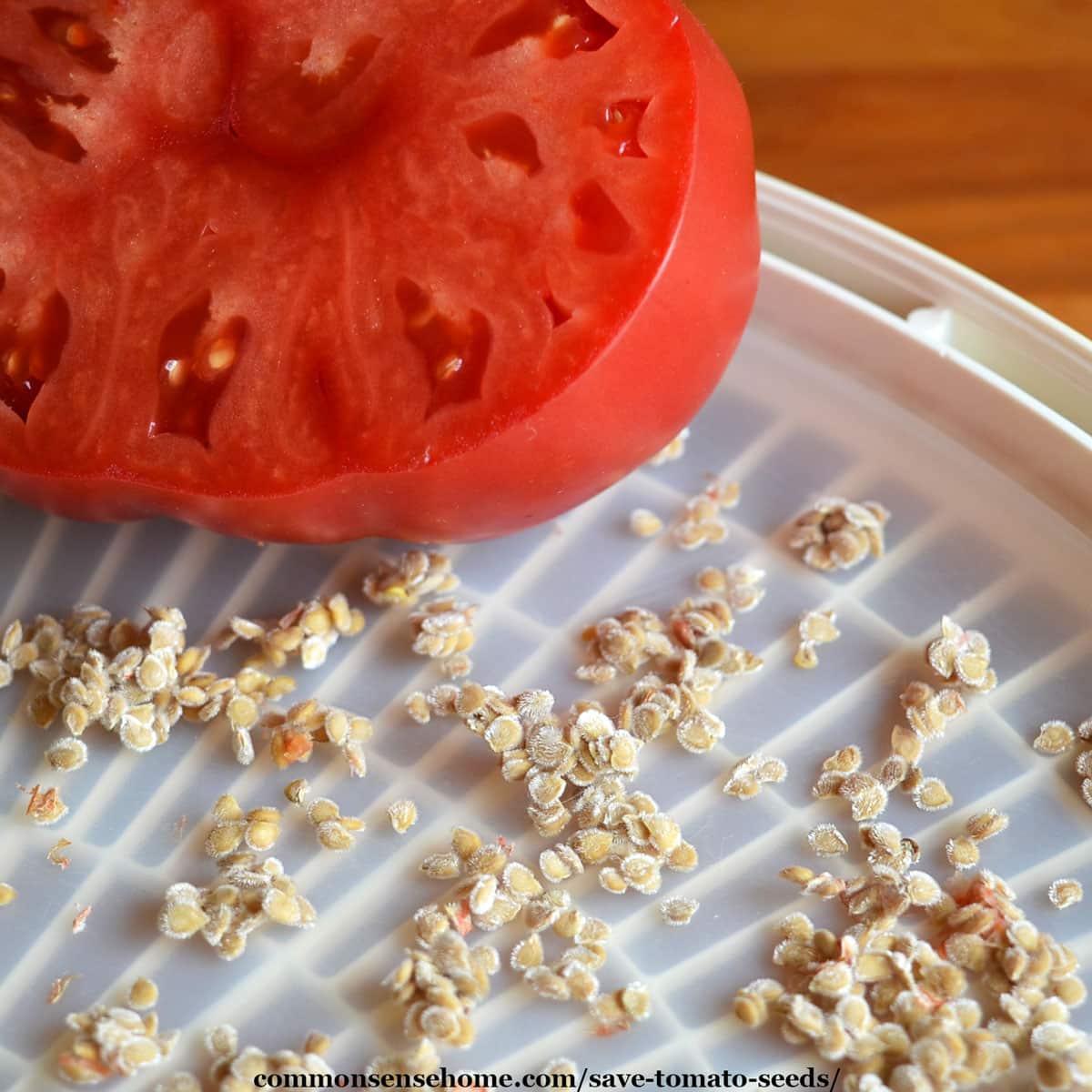
Store the Seeds in an Airtight Container in a Cool, Dry Location
When your seeds are dry, place them in an airtight container. Date and label with the tomato variety. Store the seeds in a cool, dry location, out of direct sunlight.
I like to save tomato seeds and other seeds in glass jars in a basement cupboard. A friend of mine with multiple freezers keep her seeds in the freezer. Refrigerators aren’t the best, because they tend to be too humid.
These seeds should keep for 4-6 years with proper storage.
When You’re Ready to Plant
When you’re ready to plant, we have you covered.
See “Grow Tomatoes from Seed” and “Growing Tomatoes Organically” to take you from seed starting to harvest.
Can you save seeds from hybrid tomatoes?
You can save tomato seeds from any tomatoes – but they might grow into very different plants.
Hybrid tomatoes have two different parent plants that are cross pollinated to get the best traits of both plants. When you save seeds from a hybrid, sometimes they resemble one parent, sometimes the other, sometimes a mix.
As long as you don’t mind a mix of plants, it’s fine to experiment. With proper care they will grow into healthy plants, just like other seeds.
If you want plants that grow out to be a match for the parent plant, you need open pollinated plants that have not cross pollinated with other varieties, as noted above.
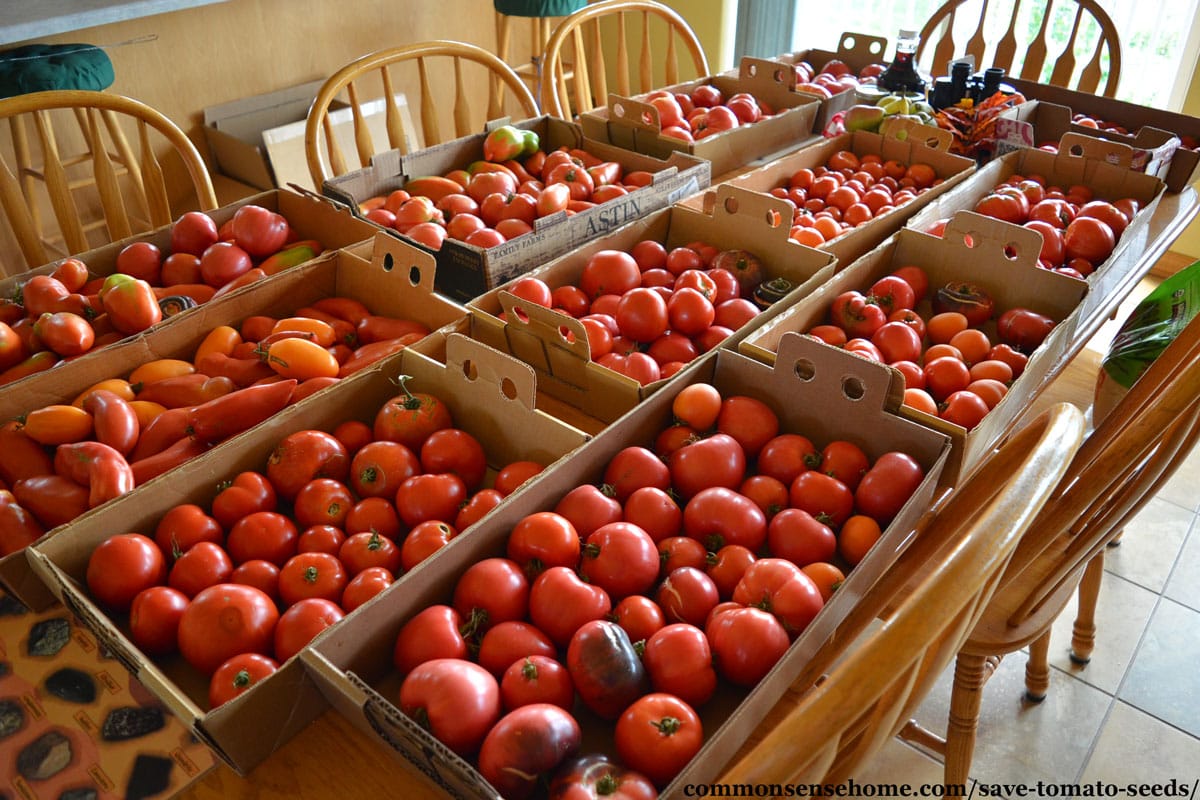
Why save seeds?
Saving your own seeds can save you money, and it also means that you have seeds available even when the seed companies are sold out.
We decided to save tomato seeds because some of our favorite varieties are getting harder to find.
I also like the idea of breeding for plants that thrive in our area. A locally adapted variety improved by traditional agriculture methods is called a “landrace”.
We’ve tried a number of tomato varieties in the greenhouses, over the years, but the most productive was Cour di Bue. Over time, the seed we save should become even better adapted for our growing conditions.
Since the saved seeds last for several years, you can rotate which variety you grow out in the isolated areas and still maintain viable seed.
More Gardening Tips
We love tomatoes, but we also grow a lot of other crops on our Wisconsin homestead.
There are over 100 gardening articles on the site, all listed by category on the Common Sense Gardening page.
They include:
How to Start a Garden – 10 Steps to Gardening for Beginners
Free Gardening Journal Templates and Other Garden Record Keeping Tips
The Practical Greenhouse Guide – What You Need to Know Before You Build a Greenhouse

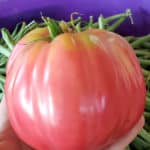

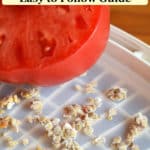
How far apart do tomato varieties need to be planted so they do not cross pollinate? We usually plant 2 or three kinds, just one plant of each. This year we had Roma tomatoes planted in tubs on the other end of our yard, for lack of planting space, so they were distanced from the cherry tomatoes and the slicer.
Thank you!
As noted:
“To prevent cross pollination, avoid growing tomatoes from different varieties near each other. Ideally, you should keep different varieties at least 25 feet apart. We save seed from a single variety grown inside the greenhouse.
If space is tight, varieties may be separated by only 10 feet. When using a smaller separation, plant a tall barrier crop such as pole beans between the tomato plantings.”
If you are saving seed from a single plant, be aware that you are working with an extremely narrow gene pool. Recessive traits will come out over time, likely leading to less robust plants. Ideally, you should have at least 30 plants of a single variety for seed saving.
I always thought tomato seeds were one of the more difficult to save (previous attempts turned moldy). These instructions are great. We had SOOO many tomato plants voluntarily show up this year from our compost in addition to the several plants were purchased and grew!
A little mold on top is normal, but you should be able to scrape that off and clean up the rest of the seeds. We get volunteers from the compost and the where the duck bedding is spread around the yard, too. (The ducks get tomatoes for a bedtime snack.) With our fairly short growing season, most of the time the volunteers come up a little late and don’t have time to ripen many fruit.
TY for this. I do not have nonGMO tomatoes this year, but will next year and I will try this system. I usually overwinter and the seeds drop into the container when it gets too cold and it replants itself the next year, but that is my cherry tomatoes. The newer varieties do not do that except very occasionally.
You’re welcome. Doing the fermenting inside gives a little more control than letting the plants take care of it in the fruit outside, but it achieves the same ends. Some varieties do take to it better than others.
There are no genetically modified tomatoes currently on the market. Hybrids use traditional breeding techniques, they just cross pollinate different varieties.
Don’t you have to stratify you’re seeds?
No, tomato seeds do not require stratification.